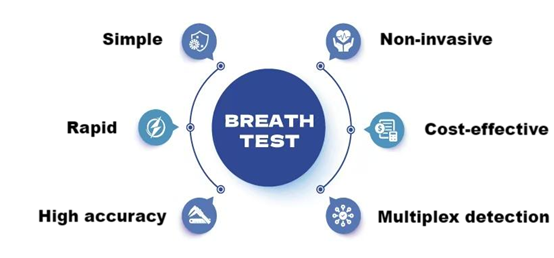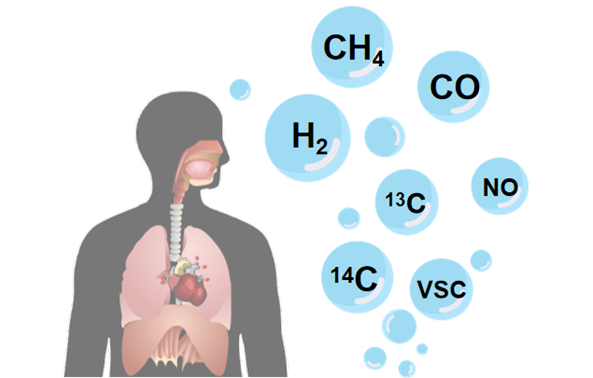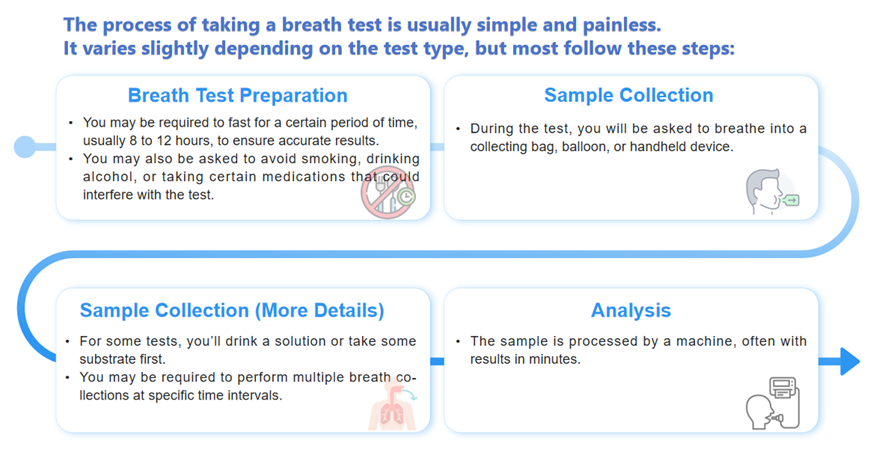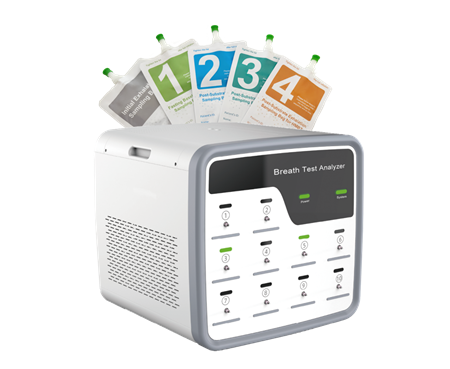What is Breath Testing?
Breath testing is a non-invasive medical procedure that analyzes exhaled breath to detect specific biomarkers linked to various health conditions. By measuring these biomarkers using advanced sensors or spectrometry, the test provides real-time insights into metabolic processes, infections, or environmental exposures, enabling rapid diagnosis without invasive sampling like blood draws or biopsies.
How Does It Work?
Breath tests operate on the principle that the human body generates and expels specific gases and compounds during normal metabolic processes, such as digestion. When we consume food, substances are broken down, absorbed into the bloodstream, and transported to the lungs to be exhaled. By analyzing the composition of exhaled breath, doctors can detect abnormal levels of these substances, which may indicate health issues.
Why Choose Breath Testing?
Breath tests offer several advantages over other diagnostic methods:

Typical Breath Test Applications
Breath tests have a wide range of applications in healthcare and play a crucial role in the diagnosis and management of various diseases and conditions.

VSC Detection: Diagnoses halitosis and identifies its underlying etiology.
NO Analysis: Detects primary ciliary dyskinesia and evaluates airway inflammation.
¹⁴C-UBT: Helicobacter pylori infection diagnosis.
¹³C-UBT: Alternative test for Helicobacter pylori detection.
H₂ Measurement: Identifies carbohydrate malabsorption, gastrointestinal dysmotility, and small intestinal bacterial overgrowth.
CH₄ Detection: Diagnoses intestinal methanogen overgrowth.
CO Test: Measures red blood cell lifespan and evaluates hemolysis, anemia and jaundice.
How Is a Breath Test Performed?

At Create Group, we're advancing this technology to make healthcare simpler and preciser.



